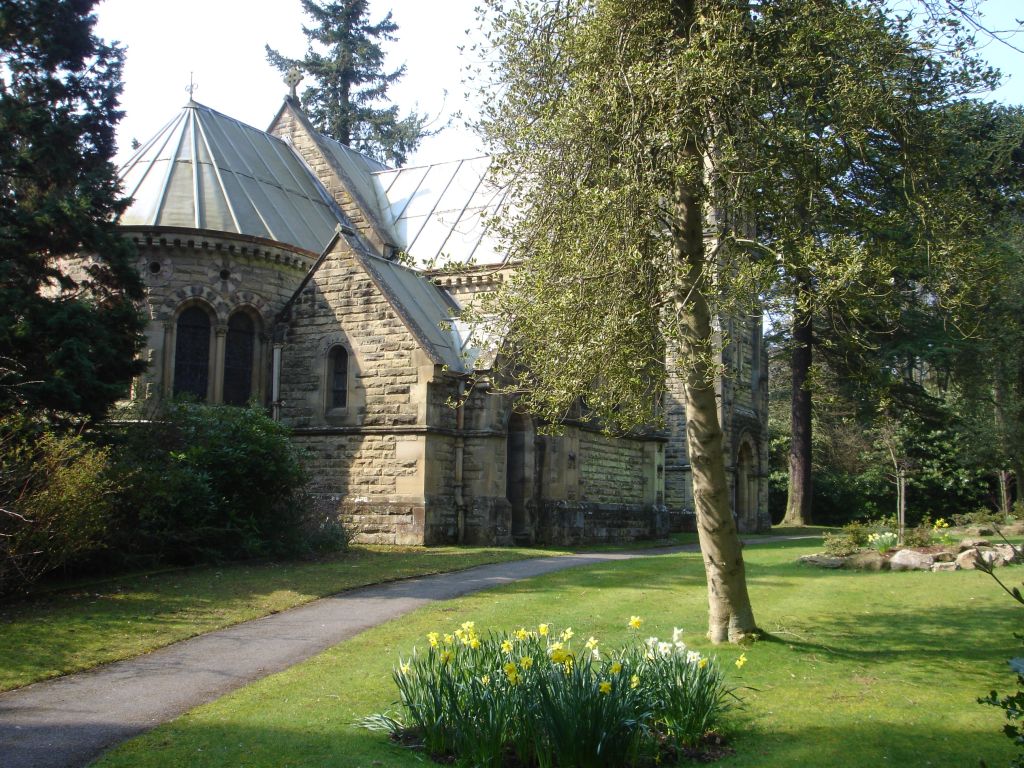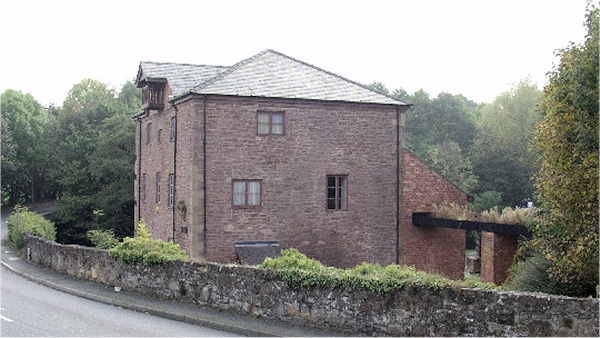|
Esclusham
Esclusham ( cy, Esclus or ''Esclys'') is a community and electoral ward in Wrexham County Borough, Wales. The community includes the villages of Bersham, Rhostyllen, Aberoer, Llwyneinion and Pentre Bychan, as well as a number of smaller settlements, the park at Erddig, and an area of the Ruabon Moors west of Aber-oer known as Esclusham Mountain. The population of the community at the 2011 Census was 3,515. History The name is recorded as Esclesham or Esclusham as early as 1315, likely originating in a combination of the Old English personal name ''Æscel'' with ''ham'', "settlement"; the name is locally pronounced with stress on the second (middle) syllable, probably due to the influence of Welsh language stress patterns.''Nomina'', v. 11-13, 1987, 102 The old township of Esclusham, within the manor of Esclusham, was part of the historic Marcher Lordship of Bromfield and Yale. The ''Survey'' of topographer John Norden, carried out in 1620 within Bromfield and Yale, defined t ... [...More Info...] [...Related Items...] OR: [Wikipedia] [Google] [Baidu] |
Rhostyllen
Rhostyllen () is a village in Wrexham County Borough, Wales, south-west of the city of Wrexham. At the time of the 2001 census, area Wrexham 014A, which includes Rhostyllen itself, had a population of 1,383 in 599 households.Wrexham 014A Key Figures Office for National Statistics Etymology Its name may be derived from the Welsh words ''rhos'' ("moor", or " rush pasture") and ''estyll'' ("staves" or "planks").History Rhostyllen was a part of the old |
Esclusham Mountain
Esclusham Mountain (Welsh language, Welsh: ''Mynydd Esclus'' or ''Mynydd Esclys'') is an area in Wrexham County Borough, Wales, United Kingdom, and is part of the Ruabon Moors. It rises to a height of 460 m (1509 feet), with the nearby spur of Cyrn-y-Brain, to the west, reaching 473 m (1550 feet).Brown, E. ''The relief and drainage of Wales: a study in geomorphological development'', University of Wales Press, 1960, p.87 It lies mostly within the Community (Wales), community of Esclusham. A smaller spur to the north, known as Minera Mountain, is within the neighbouring community of Minera. Geology The underlying rocks are a Carboniferous Limestone along with some Millstone Grit to the east.Sparks, B. ''Geomorphology'', Longman, 1972, p.174 The area was rich in minerals, particularly lead and zinc deposits. The South Minera Vein, a fault fissure rilled with mineral matter, ran through the area of Esclusham Mountain and, until the second decade of the 20th century, there were many ... [...More Info...] [...Related Items...] OR: [Wikipedia] [Google] [Baidu] |
Wrexham County Borough
Wrexham County Borough ( cy, Bwrdeistref Sirol Wrecsam) is a county borough, with city status, in the north-east of Wales. It borders England to the east and south-east, Powys to the south-west, Denbighshire to the west and Flintshire to the north-west. The county borough has a population of 136,055. The city of Wrexham is its largest settlement, which together with villages such as Gwersyllt, New Broughton, Bradley and Rhostyllen form a built-up area with 65,692 residents. Villages in the county borough also include Ruabon, Rhosllanerchrugog, Johnstown, Acrefair, Bangor-on-Dee, and Coedpoeth amongst others. The county borough has two outlying towns, Chirk and Holt, and various rural settlements in the county borough's large salient in the Ceiriog Valley, and the English Maelor. The area has strong links with traditional industries such as coal-mining and brewing, although modern manufacturing has since succeeded those former industries. The county borough was form ... [...More Info...] [...Related Items...] OR: [Wikipedia] [Google] [Baidu] |
Aberoer
Aberoer or Aber-oerAber-oer, Wrexham Ordnance Survey () is a scattered settlement in Wrexham County Borough, Wales; prior to 1974 it was in Denbighshire. It is part of the community area of , and is situated on the rural slopes of [...More Info...] [...Related Items...] OR: [Wikipedia] [Google] [Baidu] |
Ruabon Moors
The Ruabon Moors are an area of upland moorland in Wales to the west of Ruabon and Wrexham. They lie partly within Wrexham County Borough and partly within Denbighshire. In the northern part of the moors are the areas known as Minera Mountain and Esclusham Mountain. Further south are Ruabon Mountain and Eglwyseg Mountain. In the west the moors reach their greatest height at Cyrn-y-Brain, above sea level. To the north and north-east, the moors are bounded by Minera Limeworks and the Clywedog valley. In the east they slope down to the villages of Rhosllannerchrugog and Ruabon. There are several small reservoirs in this area. At the southern edge of the moors the cliffs of Eglwyseg Rocks overlook the River Dee and the Vale of Llangollen. On the western side there are more cliffs at World's End while the Horseshoe Pass separates the moors from Llantysilio Mountain. Llandegla Forest, a large conifer plantation, covers the north-western side. Ruabon Moors are part of the Clwyd ... [...More Info...] [...Related Items...] OR: [Wikipedia] [Google] [Baidu] |
Bersham Cottages
Bersham ( cy, Y Bers) is a village in Wrexham County Borough, Wales, that lies next to the River Clywedog, and is in the community of Esclusham. Bersham was historically a major industrial centre of the area, but despite this the village still retains a rural feeling. Historical significance The village holds special importance for economic historians, for not only did it house the workshops of the skilled Davies brothers of Wrexham, Davies brothers, it was one of the cradles of the Industrial Revolution. This is the place where British iron making began in 1670, where smelting iron ore with coke began in 1721, and where John Wilkinson (industrialist), John Wilkinson, the 'Iron Mad' pioneer of the Industrial Revolution, set up shop in 1761. For many years the area was one of the most important iron manufacturing centres in the world. The Bersham Ironworks, Bersham Ironworks Museum tells the story of the man who bored cannon for the American War of Independence and cylinders ... [...More Info...] [...Related Items...] OR: [Wikipedia] [Google] [Baidu] |
Bersham
Bersham ( cy, Y Bers) is a village in Wrexham County Borough, Wales, that lies next to the River Clywedog, and is in the community of Esclusham. Bersham was historically a major industrial centre of the area, but despite this the village still retains a rural feeling. Historical significance The village holds special importance for economic historians, for not only did it house the workshops of the skilled Davies brothers, it was one of the cradles of the Industrial Revolution. This is the place where British iron making began in 1670, where smelting iron ore with coke began in 1721, and where John Wilkinson, the 'Iron Mad' pioneer of the Industrial Revolution, set up shop in 1761. For many years the area was one of the most important iron manufacturing centres in the world. The Bersham Ironworks Museum tells the story of the man who bored cannon for the American War of Independence and cylinders for James Watt's revolutionary steam engine that changed the face of the w ... [...More Info...] [...Related Items...] OR: [Wikipedia] [Google] [Baidu] |
Llwyneinion
Llwyneinion is a village in Wrexham County Borough, Wales. It is part of the community of Esclusham. Its name can be translated from the Welsh language as "Einion's Grove", although until at least the 19th century the name was more commonly written as Llwynenion, "Enion's Grove". Llwyneinion has appeared in records since at least the 17th century and was once one of the properties owned by Elihu Yale, having been bought by his father.Yale family of Plâs yn Iâl (Bryneglwys) and Plas Grono (Wrexham) Dictionary of Welsh Biography There is a long industrial heritage in the area, with coal mining, iron ore mining, and iron smelting present from the 18th century onwards. Several pits were opened in the 1750s by |
Pentre Bychan
Pentre Bychan, with the literal meaning of "little village", is a semi-rural hamlet in Wrexham County Borough, Wales. Variously spelled as either one word or two (Pentre Bychan or Pentrebychan), it is situated between Rhostyllen and Johnstown in the ward and community of Esclusham, some 4 km south-west of Wrexham city centre. History The ancient monument Offa's Dyke runs through Pentre Bychan. The Pentrebychan estate was once of great importance in the area. The 16th-century house originally belonged to the Tegin family. It was a single-storey building, half-timbered with wattle and daub. In 1620 the estate was purchased by Hugh Meredith. The Meredith family, who owned several local coal mines, occupied the estate until 1802 when Thomas Meredith, the last of the male line, died. The family traced their ancestry to Bleddyn ap Cynfyn, Prince of Powys. The Hall and estate were described as among the most extensive in the area. Many of the Welsh place names on the estate in ... [...More Info...] [...Related Items...] OR: [Wikipedia] [Google] [Baidu] |
Minera
Minera ( cy, Mwynglawdd; ) is a village and community in Wrexham County Borough, Wales. It adjoins the village of Coedpoeth. The community, which in addition to Minera village includes a number of smaller hamlets such as Gwynfryn and New Brighton and large areas of farmland, had a total population of 1,608 at the 2001 census,Minera Office for National Statistics increasing slightly to 1,617 at the 2011 Census. History The name Minera has an unusual source, being derived from the low Latin for "mine" or "ore".Palmer, A. N. ''A History of Ancient Tenures of Land in North Wales and the Marches' ...[...More Info...] [...Related Items...] OR: [Wikipedia] [Google] [Baidu] |
River Clywedog
The River Clywedog is a river in Wrexham County Borough, Wales. Its uses have been watering crops, powering industrial machinery but is now used as walking trails or geography trips. The river originates to the west of Wrexham, and joins the River Dee some four miles south east of the city. Course of the river The river Clywedog rises in the hills west of the village of Minera. After flowing through Minera it turns south-east, past Coedpoeth, Bersham and Rhostyllen and through the Erddig Country Park, then east, passing slightly to the south of Wrexham. There is a path along the entire river bank from Minera to Wrexham. After passing the Wrexham industrial estate, the river joins the River Dee near the English/Welsh border. History During the 18th and early 19th centuries there were 17 watermills along the river: fulling mills for preparing cloth, mills for grinding corn and malt, and paper mills. Large waterwheels powered the bellows blasting air into the iron ... [...More Info...] [...Related Items...] OR: [Wikipedia] [Google] [Baidu] |
Johnstown, Wrexham
Johnstown is a village (and former electoral ward) in Wrexham County Borough, Wales, and forms part of the old coal mining community of Rhosllannerchrugog. It is thought to have been named after John Bury, a mid 19th century member of Wrexham's first Town Council, who built a number of houses in the area.''Transactions of the Denbighshire Historical Society'', vol 14 (1965), 182 The disused coal mine at Hafod is situated to the east of the village and the mine's former coal tip has now been converted to a country park, Bonc yr Hafod. The nearby clay quarry was used as a landfill A landfill site, also known as a tip, dump, rubbish dump, garbage dump, or dumping ground, is a site for the disposal of waste materials. Landfill is the oldest and most common form of waste disposal, although the systematic burial of the waste ... site for waste from Liverpool. It now takes waste from anywhere after the transfer to Cory's. The village has approximately 4,000 inhabitants, living i ... [...More Info...] [...Related Items...] OR: [Wikipedia] [Google] [Baidu] |



